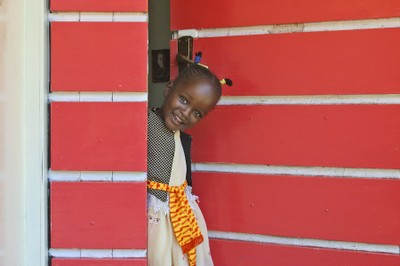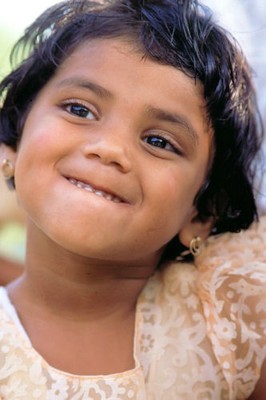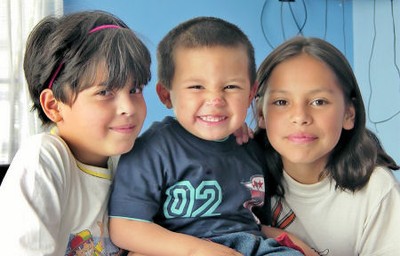About Child Sponsorship
 Child Sponsorship with SOS Children
Child Sponsorship with SOS Children
If you choose to sponsor a child with SOS Children, you will be directly supporting an orphaned or abandoned child.
For SOS Children, the word "sponsor" means money is for "supporting" or "helping to pay for" a child in need.
100% of child sponsorship donations with SOS Children are spent on the care of children. The sponsor gets information about the child, can write and visit and see what difference their money makes.
Sponsoring is an excellent way of helping children who are alone and in desperate need of help: children who, through no fault of their own, have nothing and no-one following the devastating effects of war, famine, disaster or poverty.
You can give children a second chance in life
Sponsor a child and you’ll offer them real hope both now and in the future. That’s because your money will help provide them with a stable childhood in a permanent home, as well as access to healthcare and a good standard of education. So, when they eventually reach adulthood, they can go on to lead full and independent lives.
Sponsoring a child can be a thoroughly rewarding experience – both for you and the communities you are helping. For them, it is so reassuring to know that there is someone, even on the other side of the world, who cares about them. For you it can be gratifying to see that your money is not a ‘drop in the ocean’ but is actually making a real difference.
Keeping you in touch with regular updates
You’ll receive our regular newsletter featuring fascinating photos and stories on our work in over 500 SOS Children’s Villages around the world. We are sure you will also be keen to know how your sponsored child is getting on and from time to time we will send you an update/report on their progress when we can. Plus, you are welcome to write to your sponsored child, for example at their birthday or Christmas.
You can also sign up to SOS eNews to find out more about how SOS Children is working around the world.
It’s easy to become a sponsor
Simply visit our child sponsorship page and click the sponsor online button. Then fill in your details and specify any special instructions you would like us to know about. Once we have received your completed form, we will send you details in 3-4 weeks about your sponsored child.
 Pros and Cons of Sponsoring a Child
Pros and Cons of Sponsoring a Child
There is some discussion in the media from time to time about whether child sponsorship is the best way to help children in poorer countries. Part of the problem is that different charities call child sponsorship different things. What we consider child sponsorship is a little different from some other charities. Below is an in-depth look at some common child sponsorship criticisms and our responses:
First argument:
"In most cases child sponsorship is a misnomer. It is community development by a different name. Sponsorship contributions are pooled with other donations and used to support projects to benefit the local community." (Quote from "A Rough Guide to a Better World")
Our view:
We are not a general poverty relief charity. General poverty relief charities are very good things, but we have a specialised approach concentrating on children who are all alone without anyone to care for them.
If you sponsor with SOS Children you are primarily paying for your sponsored child to have a home and family in an SOS Children's Village. On average, an SOS Children's Village also supports around ten children in the community for each child who lives in the village (e.g. through providing a school, medical care and a local nurse supporting child-headed families affected by AIDS in the nearby area).
Sponsors who started after March 2005 contribute towards the full cost of the village and these programmes. But most of what you pay for is the direct care of the children you sponsor. They are our children, they have no one else to care for them.
Second argument
"It can be degrading for the family and parents of a child to be reminded of their dependency on a distant stranger. For this reason communication with sponsors is often discouraged".
Our view:
The children whom we take in have lost their parents and have no family to care for them. In circumstances where children feel alone and unloved, we believe that sponsorship is actually positive rather than degrading for the child to feel there is someone somewhere taking an interest in them. We encourage contact between sponsors and children. With our special commitment to children who have lost their parents, sponsorship is a positive thing.
 Third argument:
Third argument:
"The administration expenses involved in sponsorship are high and this money could be better used directly helping poverty".
Our view:
If the strict alternative to sponsorship is for all the money to be used to help children, then that would be better. Some donors give regular donations without sponsorship and they are very valued. However, it has been estimated that the whole world's poverty could be cured for the amount of money that Europeans spend on ice cream. We do not accept the argument that the money which is currently spent building relationships between European adults and third-world orphans is not money well spent; the alternative is more likely to be that more money is spent inside Europe on alternatives, than this money would provide in additional aid.
Our administrative and other expenses (including informing you further about what your payments are achieving, bank charges and passing on correspondence and news) we are more than capable of covering through tax reclaimed from the governent thanks to donors Gift-Aid their contribution, allowing us to reclaim 25% of the donation in tax. We use any left-over reclaimed tax for other general charitable purposes worldwide.
We cannot recover tax from people who give us CAF vouchers, use payroll giving or do not agree to Gift Aid, but that's fine by us. We even have a little left over from those who do Gift Aid their donations.
Fourth argument:
"There are privacy issues involved in publishing details of children available to sponsor".
Our view:
We agree and we would not do this. Sponsors obviously get the real details of the children they support but they are not given permission to publish these. We do not post "available to sponsor" pictures. Fundraising would be much easier if we broadcast tales of children's misery but we do not give out children's details publicly, and avoid publishing identifiable photographs and names of children unless we have genuine permission to do so (for example in some instances from the child themselves once they have grown up). We take the issue of protecting our children seriously - after all, that is what we are here for.
There is one other thing we ought to mention. Since we encourage relationships between sponsors and children, when we increase the "minimum" price for sponsorship we do not generally terminate sponsorships when the sponsor does not feel able to increase their contribution (unless the gap becomes very large). Ending a sponsorship can give a negative message to a child who has already suffered in life. This means that our average income per sponsorship is considerably less than £20/month, nearer £10/month. The actual cost of providing a proper loving home for a child all alone varies from country to country but nowhere is it less than £40/month (Pakistan).
Of course, the cost per child of helping children in the community is much less than this: our costs supporting a child-led AIDS family are less than £10/month per child, but although many charities would offer these type of children in the community for sponsorship, we keep sponsorship for children living in the villages. (Some donors do support children in the community by making a regular donation and entering an instruction like "for African Aids Orphans").
Each child generally only has a maximum of two sponsors from the UK, although for Basse in The Gambia and Chipata in Zambia this rises to five. Children do sometimes have sponsors from other countries, too. Of course, all the money raised from a child sponsorship goes to that
child's village and the local community. This may seem less attractive than
sponsoring with a charity where
each child only has one sponsor. However, it is important to remember that
where "sponsorship" includes children who are not directly
given a home by a charity
but instead receive the occasional visit from an aid worker, there is generally no guarantee that an individual child is not being sponsored through a number of different charities. several different charities. For example, one may be supporting a nearby school while another is providing medical care in a nearby town). If you still wish to sponsor via SOS but would like to be the only sponsor of a child, consider sponsoring in Pakistan. Here, dedicated sponsorship begins at £40 not £20, but we are able to offer one sponsor per child, or two sponsors at a monthly rate of £25.
You may think that this means our child sponsorship relationship is not the unqiue experience offered by some charities. However, our child sponsors recognise that with SOS Children, sponsorship is already rather special. In practice the majority of sponsors worldwide do not visit or write regularly to their sponsored child. Sponsors that do so are appreciated, and develop as unique a personal relationship as can grow between people anywhere in the world.
See some examples of child sponsorship and sponsorship FAQs. If you're ready to help a child in our care, sponsor a child now.

 Return to Schools Wikipedia Home page…
Return to Schools Wikipedia Home page…
